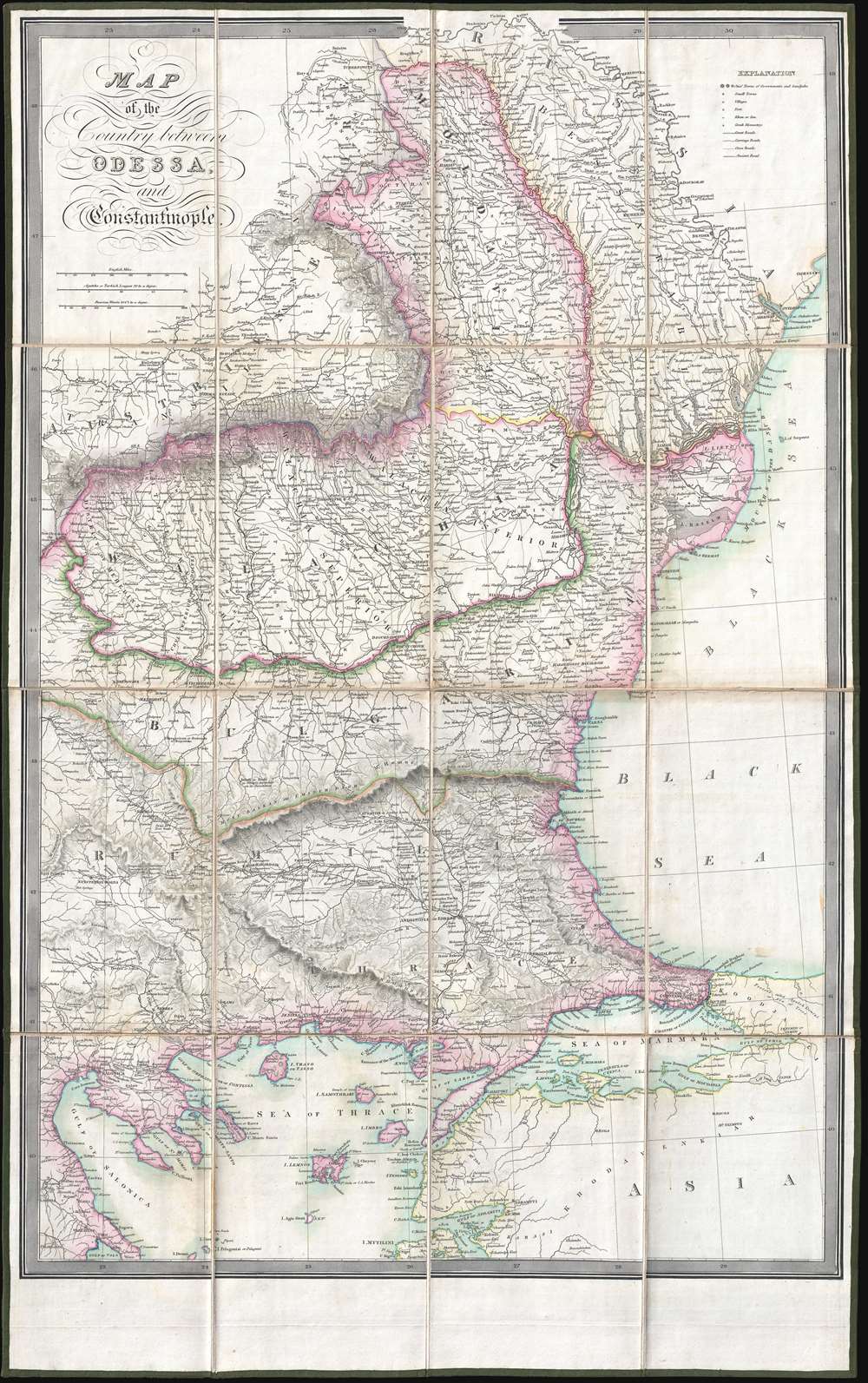This item has been sold, but you can get on the Waitlist to be notified if another example becomes available, or purchase a digital scan.
1828 Wyld Map of the Balkans from Odessa to Constantinople
OdessaConstantinople-wyld-1828
Title
1828 (undated) 33 x 20.5 in (83.82 x 52.07 cm) 1 : 1400000
Description
Russo-Turkish War of 1828-29
Following Russian participation in the Battle of Navarino during the Greek War of Independence (1821 - 1832), the Ottomans decided to close the Dardanelles to Russian ships and revoked the Akkerman Convention (signed in 1826), sparking the Russo-Turkish War. While the map does not explicitly trace the events of the war, numerous locations where key battles took place are prominently labeled. The war began when a Russian army, nearly 100,000 strong, invaded the Romanian principalities of Wallachia and Moldavia, which bordered Russian territory in April and May 1828. From here, the Russians laid siege to key Ottoman citadels, including Varna, situated on the Black Sea. Though this map was published before the end of the war, most of the territory immediately effected by the fighting is illustrated. When the war ended with the Treaty of Adrianople in 1829, the Ottomans ceded control of most of the eastern shore of the Black Sea, including the mouth of the Danube River, to Russia. Serbia achieved autonomy, and Russia occupied both Moldavia and Wallachia, which remained Russian protectorates until the Crimean War.This map was created and published by James Wyld in 1828.
Cartographer
Wyld (1823 - 1893) was a British publishing firm active throughout the 19th century. It was operated by James Wyld I (1790 - 1836) and his son James Wyld II (November 20, 1812 - 1887) were the principles of an English mapmaking dynasty active in London during much of the 19th century. The elder Wyld was a map publisher under William Faden (1749 - 1836) and did considerable work on the Ordinance Survey. On Faden's retirement in 1823, Wyld took over Faden's workshop, acquiring many of his plates. Wyld's work can often be distinguished from his son's maps through his imprint, which he signed as 'Successor to Faden'. Following in his father's footsteps, the younger Wyld joined the Royal Geographical Society in 1830 at the tender age of 18. When his father died in 1836, James Wyld II was prepared to fully take over and expand his father's considerable cartographic enterprise. Like his father and Faden, Wyld II held the title of official Geographer to the Crown, in this case, Queen Victoria. In 1852, he moved operations from William Faden's old office at Charing Cross East (1837 - 1852) to a new, larger space at 475 Strand. Wyld II also chose to remove Faden's name from all of his updated map plates. Wyld II continued to update and republish both his father's work and the work of William Faden well into the late 1880s. One of Wyld's most eccentric and notable achievements is his 1851 construction of a globe 19 meters (60 feet) in diameter in the heart of Leicester Square, London. In the 1840s, Wyld also embarked upon a political career, being elected to parliament in 1847 and again in 1857. He died in 1887 following a prolific and distinguished career. After Wyld II's death, the family business was briefly taken over by James John Cooper Wyld (1844 - 1907), his son, who ran it from 1887 to 1893 before selling the business to Edward Stanford. All three Wylds are notable for producing, in addition to their atlas maps, short-run maps expounding upon important historical events - illustrating history as it was happening - among them are maps related to the California Gold Rush, the New South Wales Gold Rush, the Scramble for Africa, the Oregon Question, and more. More by this mapmaker...

